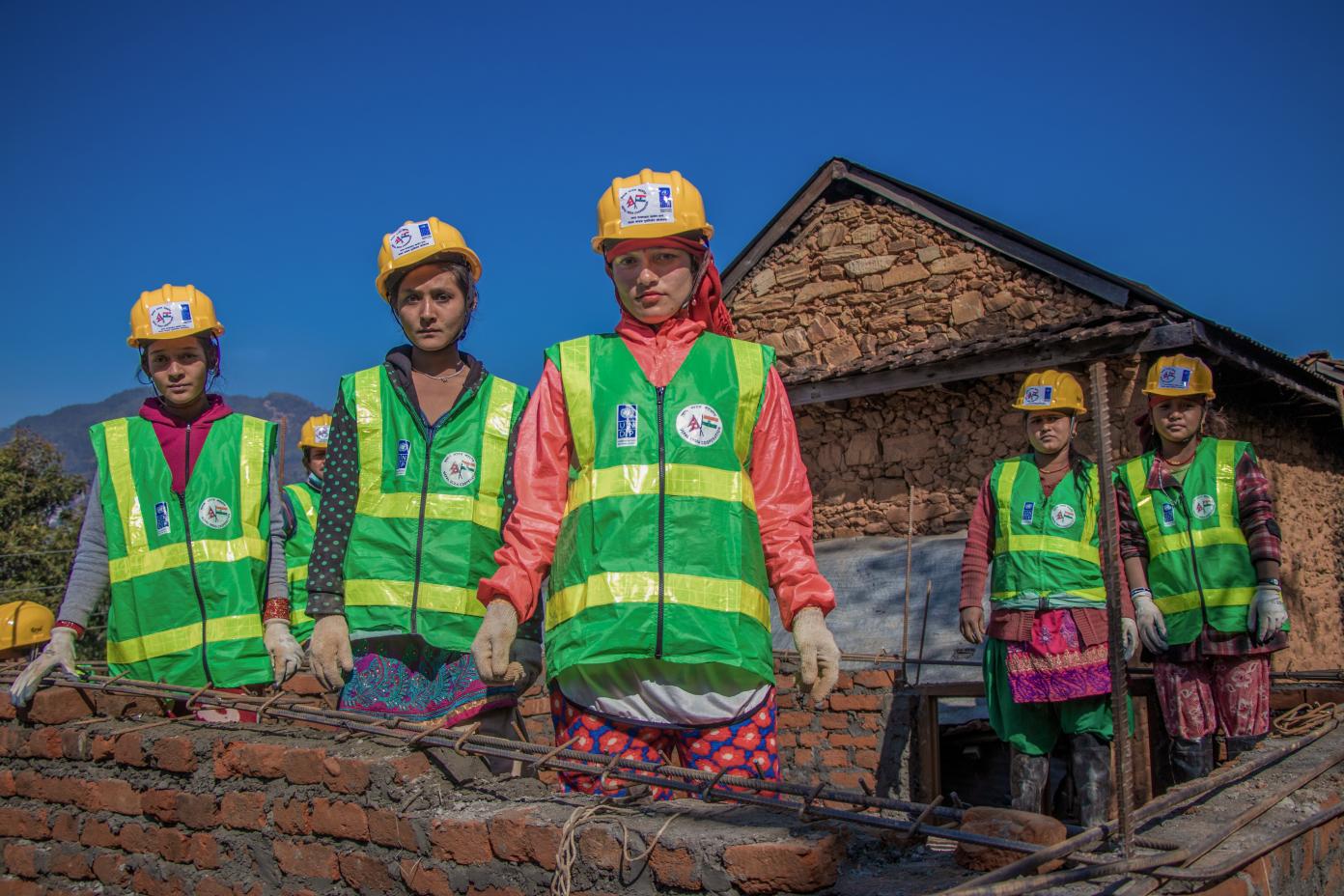Disaster response and recovery doesn’t go far enough in addressing their specific needs.
Women are hit hardest in disasters, so why are responses too often gender-blind?
March 24, 2022

Women leading a UNDP-supported reconstruction programme in post-earthquake Nepal.
The statistics are staggering; when disaster strikes, women and children are 14 times more likely than men to die. Let me use a real example: of the 230,000 people killed in the 2004 Indian Ocean Tsunami, 70 percent were women.
So why aren’t responses to disaster better geared towards the specific needs of women and children?
Recognizing this gap, UNDP is working to ensure that the support we provide to countries when disaster hits is tailored to the real needs of those affected, using real-time data, and importantly, addresses the root causes of why women are so disproportionately affected in the first place.
In Mozambique, UNDP supported women in cyclone-affected communities with recovery and resilience-building activities, which they adapted and made their own. In Colombia, UNDP worked with grassroots communities to train women on water canal management, which resulted in the restoration of 900 hectares of wetlands and helped make their communities less vulnerable to climate change.
We strongly believe that improving gender equality is crucial to strengthening nations’ resilience to disasters. It is not just a human rights issue; failing to address it also undermines hard-fought development gains.
It is heartening to see that the focus for both International Women’s Day and the 66th Session of the Commission on the Status of Women this year is on achieving gender equality and the empowerment of all women and girls in the context of climate change, environmental and disaster risk reduction.
Yet while we’ve made a lot of progress, we still have a long way to go when it comes to gender equality in disaster risk reduction in particular.
More resilient women means more resilient societies
Existing gender inequality across all sectors of society heightens women’s exposure to disaster risk, thus weakening the resilience of communities as a whole, argues the UN Common Guidance on Helping to Build Resilient Societies. We must recognize what the specific needs are and where gaps may exist in order to tackle the consequences of inequality head-on.
By harnessing local expertise, situational nuance and capitalizing on the existing, yet often hidden, skills that women have, women’s empowerment in disaster risk reduction improves resilience overall. While every disaster context is different, there are great examples yielding tangible results.
For example, in Indonesia, an all-women team developed technology to combat floods. UNDP worked closely with the National Agency for Disaster Management, BNPB, to support a group of three female university students to implement a system equipped with interactive spatial visualization, which helped vulnerable communities from being impacted by future flooding.
Communities recover faster when we support women to get back on their feet
Economically, disasters negatively impact everyone, but women are disproportionately disadvantaged.
In agriculture, World Bank data shows that female farmers are much more vulnerable to disasters than males. As the primary source of income for many women, disruption to this can have a devastating impact. Many also lack the security of bank accounts to protect savings when crisis hits.
In the Philippines during the recovery phase of Typhoon Odette late last year, UNDP worked with local authorities to provide fishing jobs to women and establish women’s groups, such as savings and credit and fisher groups which served to strengthen social capital and ensure that women remained engaged during the recovery and resilience-building processes.
Learning lessons from past hazards, the Philippines government has also developed gender-responsive policy frameworks, guidelines, and standards with the support of UNDP. Government agencies also have been mandated to allocate five percent of the budget for gender initiatives.
Paving a better path out of disaster for women
We as UNDP must continue to support governments and international partners to tackle gender inequality in whatever form it takes, recognizing that disasters, while the most acute, represent part of a much more larger issue.
The disaster risk reduction community has long recognized risk as being systemic, and gender inequality is a large part of that. While some strides have been made in women’s leadership and empowerment in advancing resilience at the municipal level in terms of driving a risk reduction agenda, there is still work to be done.
With climate change, COVID-19 and the crisis in Ukraine are at the forefront of our minds, it is important to remember that everywhere, at all times, gender inequality impedes global progress, and if left unaddressed, may represent an even bigger threat to development than disasters themselves.

 Locations
Locations